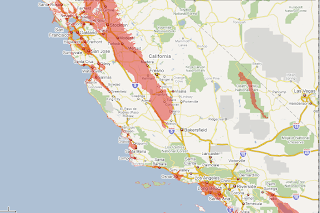---
Big gas pulling out of the pumps
By GARRY SHEERAN - Sunday Star Times
Last updated 05:00 26/07/2009
http://www.stuff.co.nz/business/2674283/Big-gas-pulling-out-of-the-pumps
Petroleum industry watchers say all four oil company majors could exit the local
retail market and revolutionise the ownership of NZX-listed NZ Refining.
It's understood Exxon Mobil has joined Shell in seeking buyers for its
downstream retail assets, including extensive service station networks and
shares in the Whangarei-based refinery company. Negotiations on the sale of both
stakes are understood to be well advanced.
McDouall Stuart analyst John Kidd said all four globally owned companies were
facing tight margins on petrol sales in a mature, over-pumped local market with
little growth opportunity.
…etc
---
US firm seen eyeing NZ refinery
By GARETH VAUGHAN – BusinessDay
Last updated 13:41 24/07/2009
http://www.stuff.co.nz/business/industries/2671676/US-firm-seen-eyeing-refinery
Valero Energy, the biggest US oil refiner, may be seeking to buy this country's
sole oil refinery the New Zealand Refining Company, Bloomberg News reported.
The report comes after The Independent revealed yesterday that Exxon Mobil was
looking to sell its New Zealand petrol stations, tank farms and 19.2 percent
stake in NZ Refining. Shell also has a series of Kiwi assets on the block
including its 17.4 percent NZ Refining stake.
That means a total of 36.34 percent of NZ Refining is up for sale. Other major
shareholders in the Marsden Point-based refiner include BP with 23.66 percent,
Chevron with 12.69 percent and the Canadian owned Emerald Capital with 13.12
percent.
…etc
---
Now I wonder WHY there is `little growth opportunity' in the local market? I
don't think it is because we wouldn't use more if we could get it; so maybe its
because they know there is no more to give us?
Why would they be flicking off the local retail arm, unless it is to get out of
a market that is about to collapse? And why try to seize control of our only
refining capacity, unless they wanted the capacity to spin product away to other
markets?
---
---
Warning: Oil supplies are running out fast
http://www.independent.co.uk/news/science/warning-oil-supplies-are-running-out-f\
ast-1766585.html
Catastrophic shortfalls threaten economic recovery, says world's top energy
economist
By Steve Connor, Science Editor
Monday, 3 August 2009
The world is heading for a catastrophic energy crunch that could cripple a
global economic recovery because most of the major oil fields in the world have
passed their peak production, a leading energy economist has warned.
Higher oil prices brought on by a rapid increase in demand and a stagnation, or
even decline, in supply could blow any recovery off course, said Dr Fatih Birol,
the chief economist at the respected International Energy Agency (IEA) in Paris,
which is charged with the task of assessing future energy supplies by OECD
countries.
...
The IEA estimates that the decline in oil production in existing fields is now running at 6.7 per cent a year compared to the 3.7 per cent decline it had estimated in 2007, which it now acknowledges to be wrong.
...
http://www.theoildrum.com/node/5638
Temporary Recession or the End of Growth?
Posted by Gail the Actuary on August 6, 2009 - 10:25am
This is a guest post by Richard Heinberg. Richard is a Senior Fellow of the Post Carbon Institute and author of five books on resource depletion and societal responses to the energy problem. He can be found on the web at www.richardheinberg.com and www.postcarbon.org.
...About 85 percent of our current energy is derived from three primary sources—oil, natural gas, and coal—that are non-renewable, whose price is likely to trend sharply higher over the next years and decades leading to severe shortages, and whose environmental impacts are unacceptable. While these sources historically have had very high economic value, we cannot rely on them in the future; indeed, the longer the transition to alternative energy sources is delayed, the more difficult that transition will be unless some practical mix of alternative energy systems can be identified that will have superior economic and environmental characteristics....
...The winding down of this historic growth-contraction pulse doesn’t necessarily mean the end of the world, but it does mean the end of a certain kind of economy. One way or another, humanity must return to a more normal pattern of existence characterized by reliance on immediate solar income (via crops, wind, or the direct conversion of sunlight to electricity) rather than stored ancient sunlight....
...However, while there is not as yet general agreement on the point, climate change itself and the needed steps to minimize it both constitute limits to growth, just as resource depletion does. Moreover, if we fail to successfully manage the inevitable process of economic contraction that will characterize the coming decades, there will be no hope of mounting an organized and coherent response to climate change—a response consisting of efforts both to reduce climate impacts and to adapt to them. It is important to note, though, that the measures advocated here (including the development of renewable energy sources and energy efficiency, a rapid reduction of reliance on fossil fuels in transport and agriculture, and the stabilization of population levels) are among the steps that will help most to reduce carbon emissions.
...
http://www.choicesmagazine.org/2003-4/2003-4-01.htm
Cuba has transformed its agriculture from a low productivity, highly subsidized, high input system to one that is more productive and greener, while removing subsidies.
But its not perfect by any means:
http://www.cnn.com/2008/WORLD/americas/04/16/cuba.farming/index.html
HAVANA, Cuba (CNN) -- President Raúl Castro has moved quickly since taking the reins of power from his ailing brother, Fidel, last year to boost food production by putting more land into the hands of profit-earning farmers.
Government officials hope that, with more land into production, the nation would need to import less food.
And so on...
Nigel




















































